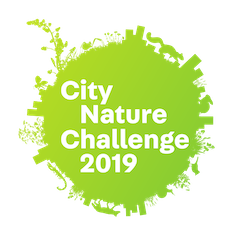April 22, 2019
City Nature Challenge in Manhattan

As citizen and community science initiatives build momentum around the world, this year's fourth annual City Nature Challenge will expand to more than 150 cities across six continents. Kicking off April 26 at 12:01 a.m. in each time zone, the challenge runs through 11:59 p.m. April 29. The student chapter of the Wildlife Society at K-State is helping to bring the City Nature Challenge to Riley County.
The global event calls on current and aspiring citizen scientists, nature and science fans, and people of all ages and educational backgrounds to observe and submit pictures of wild plants, animals and fungi using the free mobile app iNaturalist. Signing up is easy and free. Visit inaturalist.org or download iNaturalist from the Apple App or Google Play stores. Identification of photographed species will be crowdsourced through the online community April 30-May 5 and results will be announced on May 6.
Nature exists in every city, and one of the best ways to study it is by connecting scientists and the community through citizen science. As global human populations become increasingly concentrated in cities, it's more important than ever to document urban biodiversity and help ensure the future of plants and wildlife. Large pools of data built through iNaturalist, natural history museums, and science organizations help authorities make informed conservation decisions that allow humans to coexist sustainably with the plants and animals in their neighborhoods.
After launching the first-ever City Nature Challenge in 2016, the Natural History Museum of Los Angeles County and San Francisco's California Academy of Sciences are hosting their fourth — and much larger — effort. Last year's four-day challenge invited participants in 68 cities around the world to observe and submit pictures of wildlife they encountered using iNaturalist. Participants added more than 400,000 observations of nature to iNaturalist, and scientists continue to use these data to understand and conserve urban wildlife. This year, the challenge is expanding, and organizers estimate that 750,000 observations will be made by more than 25,000 people in more than 150 participating cities.
For both budding and veteran citizen scientists, participating is easy:
- Find wildlife. It can be any wild plant, animal, fungi, slime mold, or any other evidence of life — scat, fur, tracks, shells, carcasses — found in your participating city.
- Take pictures of what you find using iNaturalist.
- Learn more as your observations get identified.
Scientists can't be everywhere at once, so without community observations, they'd miss some incredible finds. During the 2018 City Nature Challenge, an observation of a hammerhead worm in the San Francisco Bay Area marked the first-ever recording of this species, which is native to Asia, in the U.S. In central Texas, the bracted twistflower — a candidate for federal protection — bloomed in deep purple hues across its only known home in the Edwards Plateau. In Hong Kong, observations of an incense tree that inspired the city's name — Hong Kong translates to "scented harbor" — helped document how the once-abundant tree has declined across its native range. And the observation of an endangered songbird flitting through swamps outside of Bogotá, Colombia, renewed hope for the future of this rare bird. Many other endangered, endemic, or data deficient species were recorded during the City Nature Challenge: This influx of information gives scientists, educators, urban planners, and policymakers insight into the biodiversity of urban locales throughout the world.
This is the first year Manhattan will compete against the more than 150 other cities, so we'd love to have as many people as possible participating. The goal is to observe and record as many species as we can find in Riley County during the City Nature Challenge. Because there has historically not been much iNaturalist usage in the Manhattan area, we are excited to see what biodiversity Riley County has to offer.
All you need to do to participate is observe and upload pictures of wild plants, animals, or fungi through iNaturalist, whether it be the app or website. As long as the location of the organism you observed is within the borders of Riley County and happened within the dates April 26-29, you're all set. Please use #CityNatureChallenge and @citnatchallenge on Twitter.
